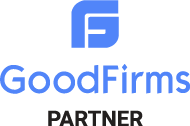In today’s digital age, the question isn’t whether to advertise—it’s how to make every dollar count. With so many platforms and metrics, it’s easy to lose track of what truly drives results. That’s where data-driven performance marketing comes in, offering a clear path to transform ad spend into scalable, measurable revenue.
By focusing on data insights and optimizing strategies in real time, businesses can create campaigns that not only attract attention but also deliver tangible returns.
Here are five proven secrets that will help you unlock the full potential of your advertising and generate consistent, high-impact results. Let’s get started.
Secret #1: Pinpointing the Right Audience
One of the most significant ways to turn ad spend into revenue is to ensure your campaigns reach the right audience. A generic, “spray-and-pray” approach is no longer sufficient in today’s data-rich digital environment. Instead, advanced tools and methodologies allow marketers to precisely define their ideal customers and deliver targeted ads that resonate.
How to Do It
Adopt Predictive Analytics
Predictive analytics forecast customer behavior using machine learning and historical data, helping you identify high-value audiences before launching campaigns. For example, predictive modeling tools like SAS or Salesforce Einstein AI can pinpoint which segments are most likely to convert (Salesforce Research).
Use Behavioral Segmentation
Segment audiences by behaviors—such as browsing, email interactions, and purchase history. Studies show behavioral targeting increases conversion rates by up to 48%.
Combine Online and Offline Data
Integrate data from in-store purchases, loyalty programs, and online browsing habits to create a unified customer profile. Tools like Oracle Unity or Adobe Experience Cloud excel at providing this 360-degree view (Oracle Customer Data Platform).
AI-Powered Lookalike Models
Platforms like Meta and TikTok Ads now utilize AI to create highly refined lookalike audiences, improving accuracy and reducing ad waste by targeting users most similar to your top customers. (TikTok for Business.)
Contextual Targeting for Privacy-First Advertising
With privacy regulations like GDPR and Apple’s iOS changes, contextual targeting—delivering ads based on the content users are consuming—is making a comeback. Platforms like Outbrain and Taboola excel in contextual ad placements (Outbrain Blog).
Real-World Example
A fitness platform used predictive analytics to identify potential long-term subscribers by analyzing behaviors like engaging with low-impact exercise content. They targeted these users with AI-driven lookalike audiences on Meta and contextual ads on fitness blogs. This approach improved ROAS by 62% and reduced acquisition costs by 45% (Meta Success Stories).
Precise audience targeting ensures every dollar works harder, driving higher conversions and revenue growth.
Secret #2: Creative That Converts
Even with precise targeting, your ad’s creative is what captures attention and compels action. Data-driven insights can transform ad creative into a performance powerhouse by ensuring it resonates with the audience and aligns with their preferences and needs.
Key Strategies
A/B Testing at Scale
Continuously test variations of headlines, images, videos, and calls-to-action (CTAs) to identify what drives the best results. Tools like Google Optimize and Optimizely simplify this process (Google Optimize).
Leverage Behavioral Data
Use insights from user interactions to craft highly relevant ad creatives. For example, dynamic ads can personalize product recommendations based on browsing or purchase history (META Dynamic Ads).
Focus on Video Content
Video ads drive higher engagement rates, with platforms like TikTok and Instagram reporting 2-3x better performance compared to static ads (Tiktok Business).
Use Emotional Triggers
Ads that evoke emotions—whether joy, excitement, or curiosity—are more likely to convert. Nielsen reports that ads with strong emotional resonance boost sales by 23% (Nielsen Insight).
Creative Tailored by Platform:
Each platform has unique user behavior. For example, TikTok thrives on short, engaging video content, while LinkedIn favors professional and informative ads. Adapting creative ensures relevance and improves performance (LinkedIn Advertising Guide).
Real-World Example
A skincare brand increased ROAS by 53% using A/B-tested dynamic ads and optimized Instagram Stories, tailored to user behavior (Think With Google).
Data-driven creative ensures your ads not only capture attention but also drive meaningful actions, maximizing the value of your ad spend.
Secret #3: Optimizing Ad Spend in Real Time
Maximizing ad spend isn’t just about setting a budget—it’s about dynamically adjusting campaigns based on performance data. Real-time optimization ensures that every dollar works as hard as possible by redirecting resources to high-performing ads and cutting losses on underperformers.
Key Strategies
Use Automated Bidding
Platforms like Google Ads and Meta Ads offer machine-learning-powered bidding strategies that adjust in real time to prioritize conversions (Google Ads Help).
Monitor Key Metrics Daily
Keep an eye on core metrics like ROAS, CPC, and CTR. Tools like Google Analytics 4 and Facebook Ads Manager make tracking performance easy and actionable (Google Analytics).
Dynamic Budget Allocation
Shift budgets between campaigns or ad sets based on their real-time effectiveness. Tools like Adobe Advertising Cloud and Skai excel in automating this process (Adobe Advertising Cloud).
A/B Testing for On-the-Fly Adjustments
Experiment with different ad formats, creatives, or targeting within a single campaign to quickly identify what works and scale it. Platforms like Optimizely make it seamless (Optimizely).
Leverage Predictive Analytics
Tools like SAS or Tableau provide forecasts on campaign performance, helping marketers adjust before issues arise (Tableau Predicitve Insights).
Real-World Example
An online education platform running ads on Google optimized their campaigns using automated bidding and dynamic budget allocation. By shifting budget to keywords with the highest conversion rates and pausing low-performing ones, they increased ROAS by 35% within the first month (Google Ads Success Stories).
Real-time optimization ensures you’re spending on what works and cutting losses fast, transforming your ad budget into a precision tool for growth.
Secret #4: The Power of Cross-Channel Campaigns
Relying on a single ad platform limits your reach and reduces overall campaign effectiveness. Cross-channel campaigns leverage multiple platforms, providing a holistic view of your customer’s journey and creating synergy between touchpoints. When done right, this approach amplifies results while optimizing ad spend.
Key Strategies
Unified Campaign Management
Use tools like HubSpot or AdRoll to manage campaigns across multiple platforms from one dashboard. This centralization ensures consistent messaging and easier performance tracking (Hubspot Marketing Tools).
Retarget Across Channels
Retarget users who engaged on one platform with ads on another. For example, target website visitors with personalized ads on Facebook and Google Display Network (AdRoll Retargeting).
Multi-Touch Attribution
Understand how different platforms contribute to conversions by using attribution models in tools like Google Analytics 4 or Adjust (Google Analytics Attribution).
Platform-Specific Strategies
Adjust your creative and targeting to fit the strengths of each channel. For instance, LinkedIn works for B2B campaigns, while TikTok and Instagram excel at engaging younger demographics (LinkedIn Business).
Omnichannel Personalization
Use customer data platforms like Salesforce or Segment to deliver consistent and personalized messaging across touchpoints (Salesforce CDP).
Real-World Example
A luxury travel company launched a cross-channel campaign targeting high-net-worth individuals. They used LinkedIn to share aspirational blog posts, retargeted visitors on Instagram with stunning visuals of vacation destinations, and closed the loop with Google Search ads targeting keywords like “luxury safaris.” The strategy increased conversions by 47% and lowered CAC by 28% (AdRoll Case Studies).
Cross-channel campaigns allow you to meet your audience where they are, reinforcing your message and maximizing the effectiveness of your ad spend.
Secret #5: Measuring What Matters
Tracking the right metrics is critical to transforming ad spend into revenue. Focusing on meaningful Key Performance Indicators (KPIs) ensures you can make data-driven decisions that directly impact your bottom line. Vanity metrics, like impressions or likes, may look good on paper but don’t necessarily drive revenue.
Key Strategies
Focus on Revenue-Driving KPIs
Metrics like Return on Ad Spend (ROAS), Customer Acquisition Cost (CAC), and Lifetime Value (LTV) give a clear picture of your campaign’s profitability (HubSpot ROI Guide).
Adopt Incrementality Testing
Measure the true impact of your ads by running incrementality tests to isolate ad-driven conversions from organic ones (Google Ads Guide on Incrementality).
Track Attribution Models
Use models like linear, time-decay, or data-driven attribution to understand how different channels contribute to conversions. Tools like Google Analytics 4 and Adjust can help (Adjust Attribution Guide).
Integrate Data Dashboards
Consolidate data from multiple platforms into dashboards using tools like Tableau or Power BI to gain actionable insights in real time (Tableau Dashboards).
Monitor Engagement and Retention
Beyond initial conversions, track metrics like repeat purchase rates and churn to evaluate the long-term success of your campaigns (Segment Engagement Metrics).
Real-World Example
An e-commerce apparel brand transitioned from tracking impressions to focusing on ROAS and CAC. By optimizing campaigns with high ROAS and reducing spend on costly, low-converting ads, they increased overall profitability by 50% within three months (HubSpot Case Studies).
Measuring what matters ensures your marketing efforts are not just visible but impactful, driving sustained growth and maximizing the value of your ad spend.
Maximize ROI with Foresight Fox
Turning ad spend into revenue is no longer about trial and error—it’s about strategy, precision, and data. By leveraging advanced targeting, engaging creative, real-time optimizations, cross-channel campaigns, and actionable metrics, businesses can achieve powerful and measurable results.
At Foresight Fox, we help businesses turn data into results. Our expertise in audience insights, campaign optimization, and cross-channel strategies ensures your marketing budget drives maximum ROI. Partner with us to unlock your advertising potential and achieve revenue success.


